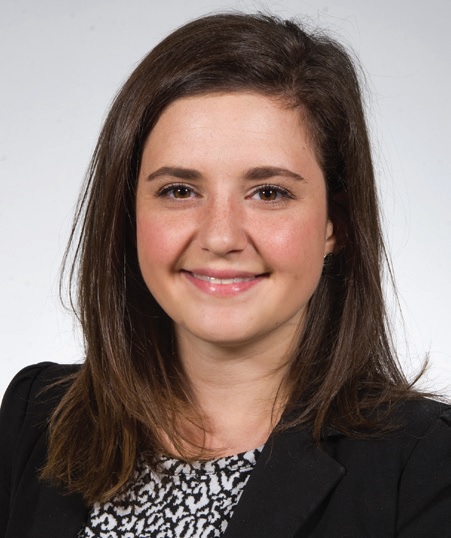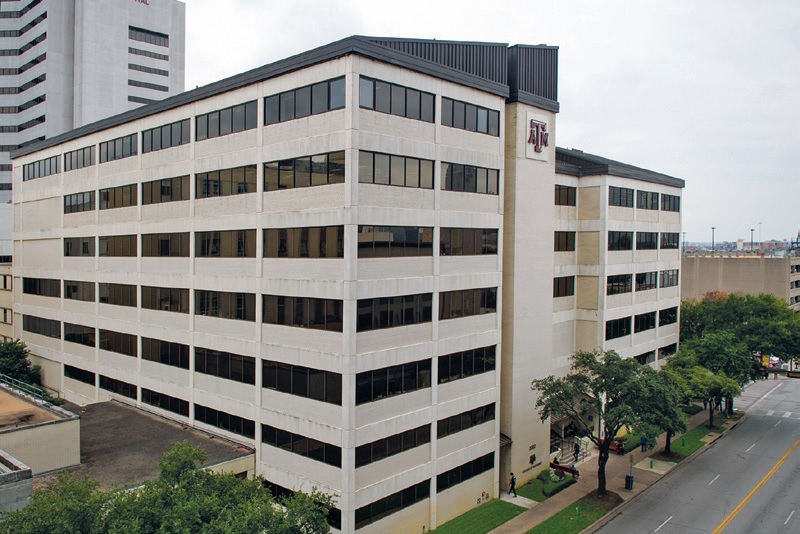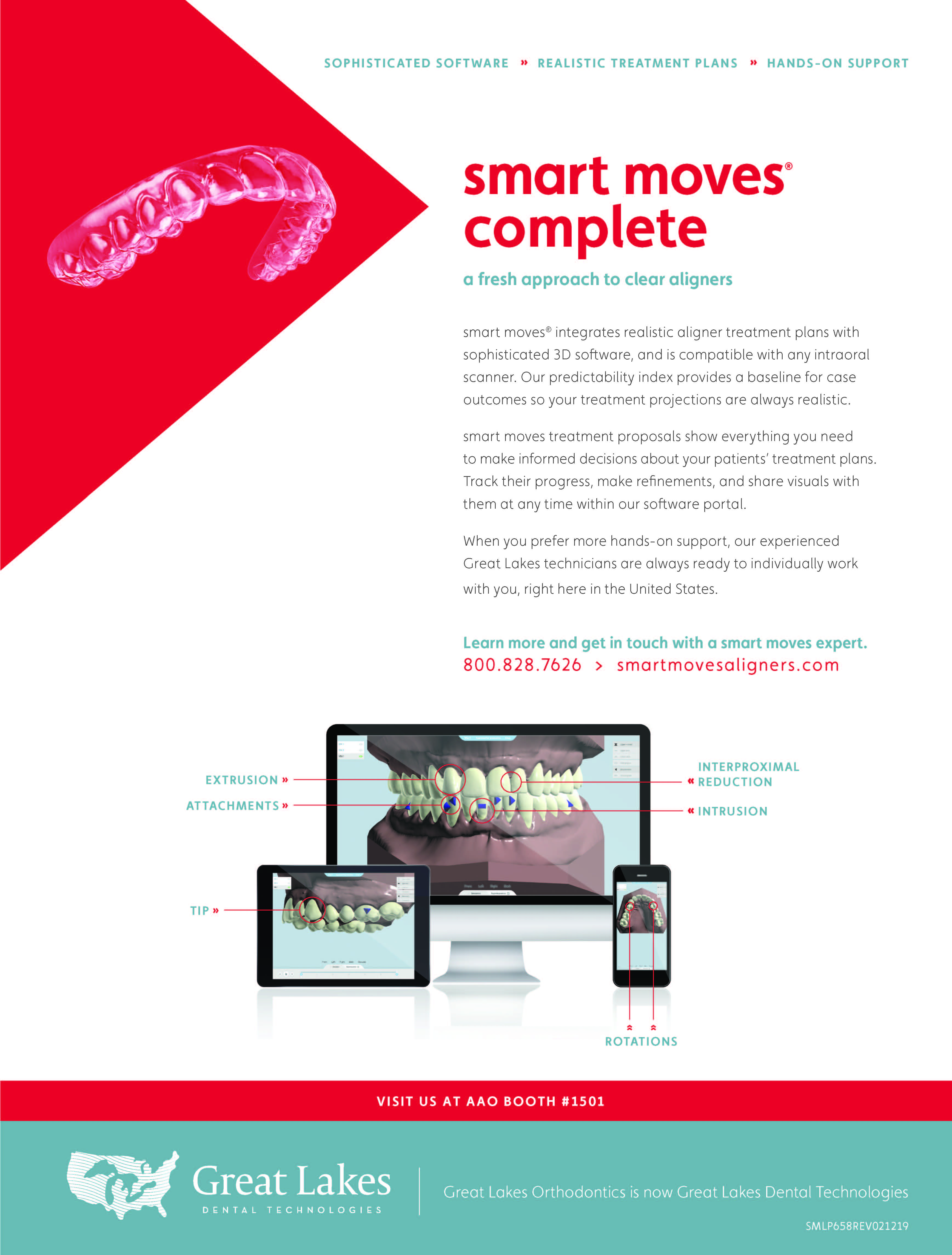2019 Eugene L. Gottlieb JCO Student of the Year: Dr. Katya Skillestad
The Journal of Clinical Orthodontics is pleased to announce Dr. Katya Skillestad from Texas A&M University as the winner of the 2019 Eugene L. Gottlieb JCO Student of the Year Award, presented by American Orthodontics. Dr. Skillestad was selected over 17 other students from schools around the United States in a two-stage, months-long competition judged by members of the JCO editorial board. Her prize includes more than $8,000 worth of materials and travel from American Orthodontics, JCO, and Dolphin, as well as a presentation ceremony during the Residents Reception at the AAO annual conference in Los Angeles.
The Student of the Year Award is named to honor the legacy of JCO’s Founding Editor, the late Dr. Gottlieb. Dr. Skillestad is the fourth awardee, joining Dr. Samaneh Mojarrad from the University of Pennsylvania, Dr. Moataz Elmahdy from the University of Rochester, and Dr. Krystian Jarosz from Rutgers University. Texas A&M University is thus the fourth school to produce a winning student over the four years of the competition.
Any U.S. orthodontic department was eligible to nominate one current student by submitting two letters of recommendation and the student’s personal essay. Each student was then given records from an unpublished case and asked to write a complete treatment plan, including all possible alternatives, within two weeks. In December, three JCO editorial board members narrowed the initial group of 18 nominees to 12 finalists. For the second stage, each of the finalists submitted an ABO board-style case report. Moderated by JCO’s Editor-in-Chief, Dr. Robert Keim, the judging panel included Dr. S. Jay Bowman of Portage, Michigan; Dr. John Graham of Salt Lake City; Dr. Robert Haeger of Kent, Washington; Dr. Neal Kravitz of South Riding, Virginia; Dr. Sarah Shoaf of Winston-Salem, North Carolina; and Dr. Peter Sinclair of Los Angeles.
Similar articles from the archive:
As in past years, the judges were highly impressed by the quality of submissions. JCO will feature each finalist on our Facebook page in the coming months. Congratulations to Dr. Skillestad and Texas A&M University! Current orthodontic students and faculty can expect the start of the 2020 nomination process in August.
PHILIP B. VOGELS
VP of Marketing and Business Development
Q&A with Dr. Katya Skillestad
Can you tell us a little about yourself?
I was born in Uzbekistan in the former USSR and emigrated to the United States with my family in 1992. We received political asylum from the U.S. government, and I am forever grateful for that. I grew up in Charlotte, North Carolina; attended the University of North Carolina at Chapel Hill (go Heels!); and moved to Dallas for my orthodontics residency. I love spending time with my husband and our crazy, cuddly dog; going to the movies; playing board games; and going to happy hour with my friends.
Why are you pursuing a career in orthodontics?
I don’t have a single school photo before the age of 15 with an open-lipped smile. Whenever I laughed or spoke in front of a group, I would cover my mouth. Coming from poverty in the former USSR, fixing my crooked teeth just wasn’t a priority in my family. Instead, they focused on the importance of education, which I am certainly grateful for. It was when a relative made a negative comment at a wedding that I was finally taken to an orthodontist. At 14, getting braces changed my entire demeanor. I transitioned from being shy and self-conscious to being bold and outwardly goofy—a change I hope I can make in my patients, too. In dental school, I loved the problem-solving aspect of orthodontics. Every case is like a riddle! Entering the orthodontic field has definitely been the best career decision I could have made.
Can you describe the path that led you to Texas A&M University College of Dentistry?
After dental school, I wanted a program that would teach me to be the best orthodontist I could be, with co-residents who felt like family and in a city that my husband and I would love. Texas A&M has fulfilled our expectations and more! We call ourselves the Baylor family, and that is because we all work hard and help each other enormously along the way.
What has surprised you the most during your orthodontic education?
I was surprised at how much the teeth affect the soft tissue; just moving the incisors a few millimeters can really change a person’s face. The other thing that I remember being shocked by is how easy it is to place a miniscrew with only topical anesthetic—or maybe my patients are just champs!
What has been the most difficult part of becoming an orthodontist?
Because Texas A&M takes research seriously, the master’s component of my program has definitely required a lot of hard—but rewarding—work. Dr. Peter Buschang is a leader in orthodontic research and holds residents to a high standard. He has made me a much more informed connoisseur of research, and he has taught us to be lifelong learners. I think this will benefit me greatly throughout my career.

Dr. Katya Skillestad
What, so far, has been your most rewarding orthodontic experience?
I had a full-step Class II patient with severe vertical maxillary excess, incompetent lips, and 7-10mm of crowding who was being treated nonsurgically because of financial reasons, even though she could have benefitted from surgery. I ended up figuring out a way for her to afford double-jaw surgery and a genioplasty, thanks to a wonderful oral surgeon in the area who agreed to do the whole thing for a fraction of the price. She was so happy afterward!
What has been your most difficult case so far?
I have an 18-year-old nongrowing patient with a skeletal open bite (MPA = 56°), mentalis strain, and completely blocked-out upper and lower canines with recession. The high and labially ectopic canines made closing the open bite even more challenging. We ended up extracting four premolars and placing two palatal miniscrews and a transpalatal arch with intrusion hooks to close her open bite through molar intrusion and mandibular autorotation. I am happy I will have started and finished this case without transferring her to a younger resident. I am planning to debond her soon!

Texas A&M University College of Dentistry, Dallas. (Photo courtesy of Texas A&M University.)
I have an 18-year-old nongrowing patient with a skeletal open bite (MPA = 56°), mentalis strain, and completely blocked-out upper and lower canines with recession. The high and labially ectopic canines made closing the open bite even more challenging. We ended up extracting four premolars and placing two palatal miniscrews and a transpalatal arch with intrusion hooks to close her open bite through molar intrusion and mandibular autorotation. I am happy I will have started and finished this case without transferring her to a younger resident. I am planning to debond her soon!
Any research projects you’d like to tell our readers about?
The goal of my master’s thesis was to lay the groundwork for the development of a difficulty index for use in educational settings and by inexperienced orthodontists. I investigated treatment duration in Class II patients—specifically, what characteristics extended treatment time. So far, we have found that open bite and increased upper incisor proclination are most closely related to treatment duration. As for Class II treatment modality, Herbst appliances take more time than either extractions or elastics.
What are your postgraduate plans?
I am planning to return to North Carolina, although the exact location is still to be determined.
What do you think orthodontics will look like in 10 years?
I think more people will be buying three-dimensional printers and bringing clear aligners in-house to reduce the fees associated with clear-aligner therapy. I also think skeletal anchorage will play a larger role in helping guide favorable growth in children.
Rapid-Fire Round
How can orthodontists thrive in today’s competitive marketplace, particularly with the increase in dentists offering various forms of orthodontics?
We need to continue to stay on top of the advancements in our field. If we are honest with our patients and give them all of the viable options for treatment, they will see that there are some treatment options that only an orthodontist should execute.
Social media: Should it be a major tool in an orthodontist’s marketing arsenal?
In today’s world, a social-media presence is definitely a necessity, especially because of the prevalence of direct-to-consumer marketing by orthodontic companies and our growing dependence on patient-based referrals.
Clear aligners: What malocclusions should they be considered or not considered for?
I have seen some really cool stuff done with aligners, especially with molar intrusion for open bites and extraction cases for severe crowding. I think most people would agree the toughest cases to treat with aligners involve patients with deep bites, transverse concerns, or impactions, but much can be said for combination treatment with aligners and brackets or appliances.
TADs: Are we moving toward too much TAD usage, or will applications continue to increase?
Graduates are becoming more comfortable with placing miniscrews during residency, so I think inevitably their use will increase. I definitely think the applications of miniscrews will continue to expand, especially in growth modification and intrusion mechanics.
Extraction: Where do you stand on the debate?
You have to do what is best for the patient in terms of esthetics, stability, and gum health. Sometimes the most conservative approach is extracting teeth.
Retention: Should patients always be pushed toward permanent retention, and how long should we continue to see them on recall visits?
I think patients should be educated appropriately about the advantages and disadvantages of permanent retention, such as the increased stability of orthodontic correction and the potentially greater difficulty in flossing, but ultimately the decision should be theirs. The appropriate recall time is, of course, up to the individual provider, but I do not think lifetime maintenance by the orthodontist is necessary.
Phase I treatment: Overused, underused, or properly used?
Phase I treatment absolutely has a place, and I think there are practitioners who do all of the above. We should be informing our patients and parents of the benefits of early treatment, such as capitalizing on good compliance, reducing the risk of trauma, alleviating psychosocial concerns, and reducing the likelihood of unfavorable growth. If the patient’s malocclusion doesn’t require immediate treatment, which is often the case, I’m a fan of complimentary observation appointments until they are actually ready.
Accelerated orthodontics: What does the future hold?
Currently, most forms of accelerated orthodontics are either too invasive for the short-term benefit or have been proven not to work at all. This is an area of constant concern for practitioners from a financial standpoint and for patients from a “When am I getting my braces off?” standpoint, so I have high hopes for new innovations!


